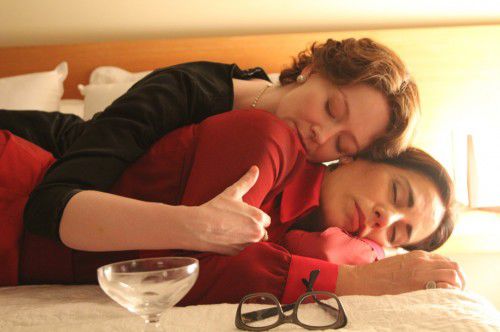 ELIZABETH Bishop (a cracking portrayal by Miranda Otto) had been Poet Laureate of the US when in 1951 aged about 40 she arrived in Rio de Janeiro for a short vacation with her Vassar friend Mary Morse (Tracy Middendorf).
ELIZABETH Bishop (a cracking portrayal by Miranda Otto) had been Poet Laureate of the US when in 1951 aged about 40 she arrived in Rio de Janeiro for a short vacation with her Vassar friend Mary Morse (Tracy Middendorf).
Brazilian filmmaker Bruno Barretto’s film tells the story of the relationship between Elizabeth, Mary and wealthy landscape architect Lota de Macedo Soares (Gloria Pires) during the ensuing 12 years.
The record is unclear whether Elizabeth was lesbian before meeting Lota. She is the film’s principal emotional focus but Lota’s possessiveness generates its prime conflict. When Elizabeth became sick just off the ship, Lota cared for her and fell in love (temporarily breaking Mary’s heart until Lota bought her a daughter from a peasant family.). Restored to health, Elizabeth stayed for 12 years, initially happily (one might be forgiven for feeling that Lota’s wealth was too comfortable a shelter to be cast aside) until her alcoholism and infidelity generated depression leading Lota to suicide.
The film looks lovely. Miranda Otto’s luminous beauty is delectable. Pires’ handsome body and features are splendid in a different way. While paying scant attention to Brazil’s impoverished peasantry, the film presents a mind-nourishing sampler of Brazilian politics and American literary intelligentsia (Robert Lowell and Elizabeth were close friends; Elizabeth won a Pulitzer Prize.)
Lota’s legacy is Rio’s Parque do Flamengo that she designed and had built. Elizabeth’s is her poetry. The pair has no shared memorial although this film might be so regarded.
At Palace Electric
The post Review / ‘Reaching for the Moon’ (M) *** and a half appeared first on Canberra CityNews.